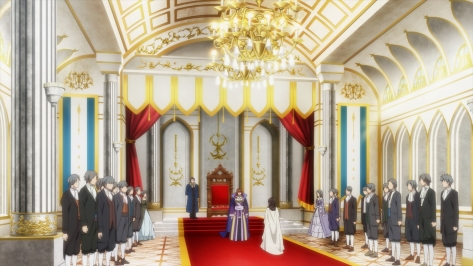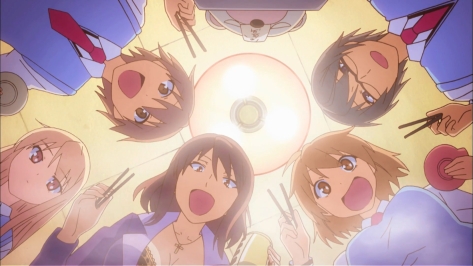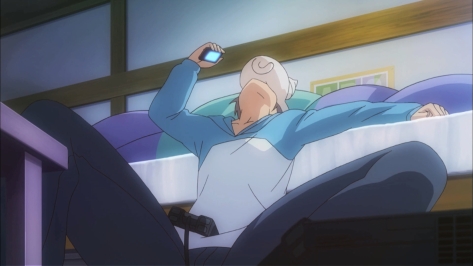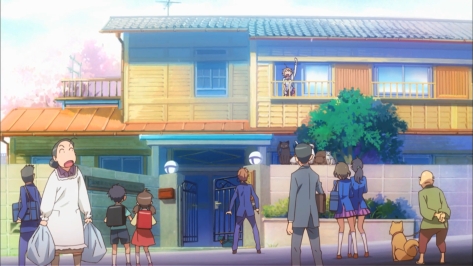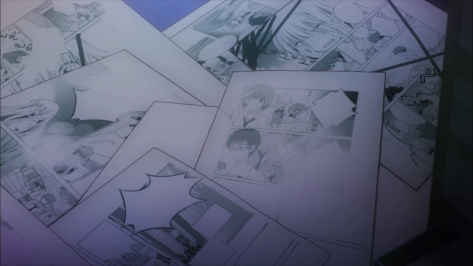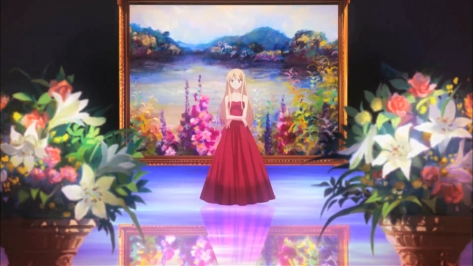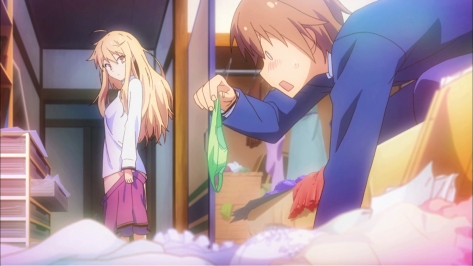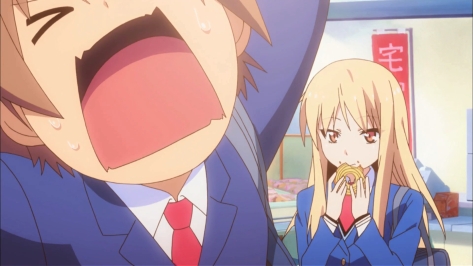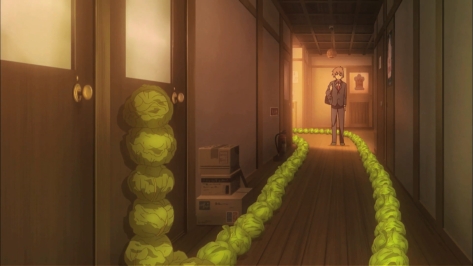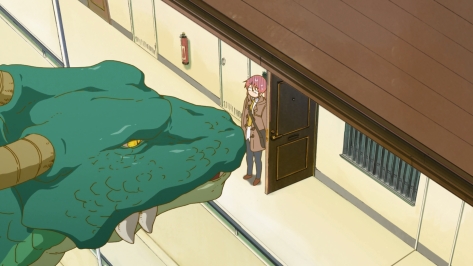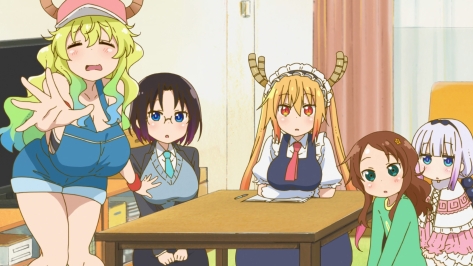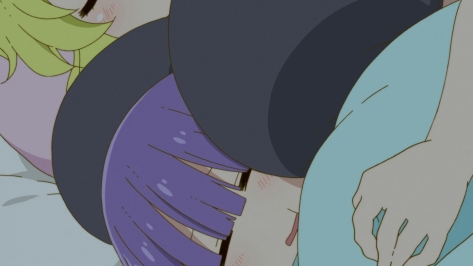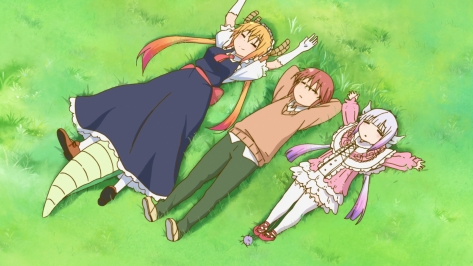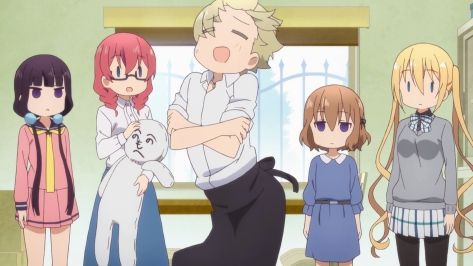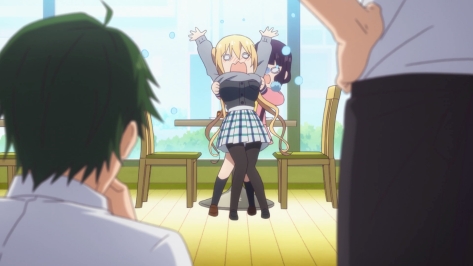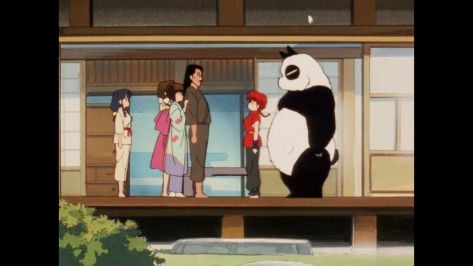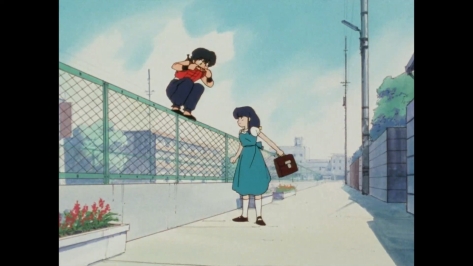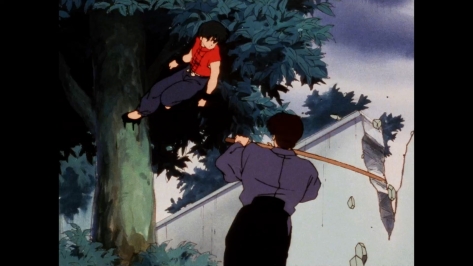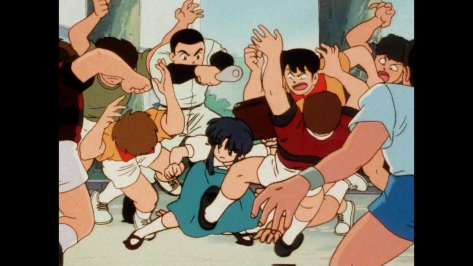Japanese Title: Seijo no Maryoku wa Bannou Desu
Similar: Snow White with the Red Hair
Ascendance of a Bookworm
Watched in: Japanese
Genre: Fantasy Slice of Life
Length: 12 episodes
Positives:
- Easy going, comfortable atmosphere
- Looks pleasant
Negatives:
- Isekai aspect is pointless
- Protagonist succeeds without effort
- Shallow world building
(Request an anime for review here.)
The isekai genre in anime is almost universally garbage, having run itself into the ground with the most low effort clones for a decade now. However, one isekai caught my eye in the spring 2021 line-up for not being an action series or featuring a teenaged protagonist.
The Saint’s Magic Power is Omnipotent features a twenty-something office lady summoned against her will to another world to be the “saint” that will fend off the growing evil from this strange kingdom. Except, she’s not the saint. The other woman summoned with her is. The mages aren’t sure why the summon called forth two people – perhaps the dire situation requires two saints? While the prince whisks off the other woman to fulfil her destiny, Sei is free to do as she pleases and receives all the comforts the kingdom can provide. Bored with her new situation in life free of TV and the internet, she wanders into the Research Institute of Medicinal Flora and soon starts brewing potions, which turn out to be more effective than the norm. Her cooking also makes soldiers stronger. Is she the saint after all?
My initial impression of Omnipotent is a positive one. I like the older protagonist (not being an isekai rapist for once is a plus as well) and the less action-orientated premise stands out. My interest quickly wanes, sadly, as Sei meekly goes along with everything far too easily and her magical power is a nebulous gift that makes her the best at everything. I didn’t expect the title to be literal.
She makes potions the same as anyone else (never mind that she just started) yet they’re 50% stronger simply because. When she visits the mages to learn to enchant gemstones for a gift to her beau, she executes a perfect enchantment stronger than anyone at the institute could do on her first try. She proceeds to enchant a box of gems at the head mage’s request within a casual afternoon.
What bothers me more than the instant omnipotence is how irrelevant the isekai device is. Apart from her mentioning she’s bored without TV a couple of times, the fact that she’s from another world is irrelevant. Screams of lazy writing. Why not have her incorporate modern medicine and knowledge into her potions to make them stronger, à la Outlander? A notable twist could be that she is indeed no saint but her modern capabilities make her better than a saint. Weirdly, she only makes real use of each type of magic once – outside of the potions – in the series. This is a “magic spell of the week” show. That’s a first.
Beyond her abilities, I have never seen someone acclimatise so quickly and forget all connection to the modern world. There is some consternation about what would happen if everyone found out that she was a saint, probably the saint, though no conflict comes to fruition. It feels as if this is an isekai because isekai is popular, therefore you must have that tag no matter how flimsy. Omnipotent would have worked better if Sei were a gifted mage discovered by a high scholar in some remote village.
I find it tough to overstate how little effort went into the premise and the world. Sei’s power is undefined. The present day connection is meaningless. The fantasy society has no sense of lore or world building beyond the visuals and a few copy-pasted video game elements for magic. The great evil is as ill-realised as the rest, seen towards the end with a bit of action against nameless, faceless enemies.
“What are they?”
“Evil.”
“Yes, but what kind of evil. Do you have a bestiary or something?”
“No. They evil.”
This is more of a slice of life anime though, and as such, this doesn’t turn my opinion negative. The Saint’s Magic Power is Omnipotent is a relaxed comfort watch where everything looks lovely, where a romance with the commander matters more than the great evil. It’s a case where more effort could have made an anime I love instead of a watch, enjoy, and forget series.
Overall Quality – Low
Recommendation: For fantasy slice of life fans only. The Saint’s Magic Power is Omnipotent is for those in need of a conflict-free, no-thought fantasy anime. For a little more oomph (woah, not too much though), I recommend Snow White with the Red Hair instead.
(Request reviews here. Find out more about the rating system here.)
Awards: (hover over each award to see descriptions; click award for more recipients)
Positive: None
Negative:







